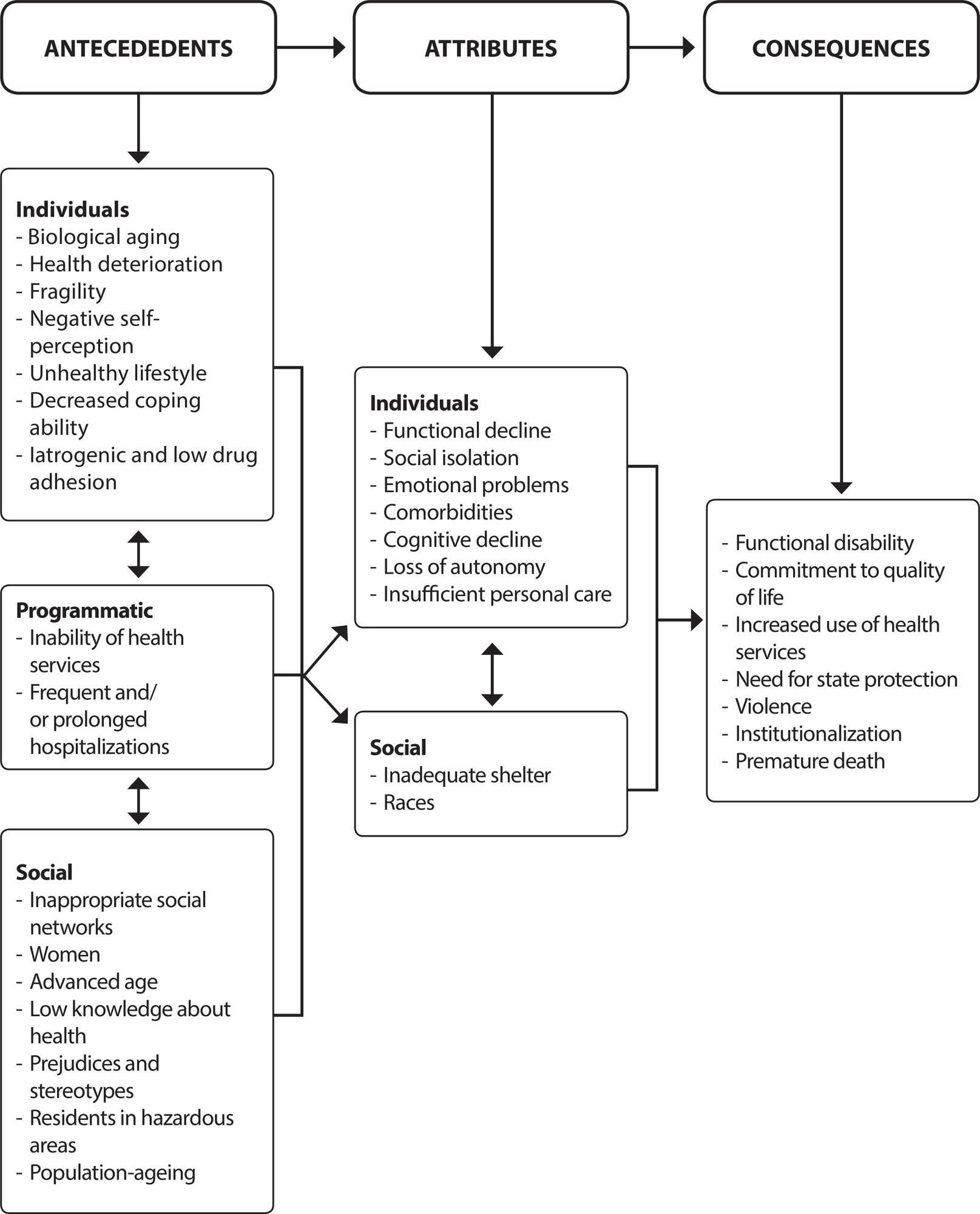-
ORIGINAL ARTICLE
Content validity evidence of the Brazilian version of the Cognitive Symptom Checklist-Work-21
Revista Brasileira de Enfermagem. 2023;76(4):e20220453
09-04-2023
Abstract
ORIGINAL ARTICLEContent validity evidence of the Brazilian version of the Cognitive Symptom Checklist-Work-21
Revista Brasileira de Enfermagem. 2023;76(4):e20220453
09-04-2023DOI 10.1590/0034-7167-2022-0453
Views0See moreABSTRACT
Objective:
to cross-culturally adapt and assess the content validity evidence of the Cognitive Symptom Checklist-Work-21 for the Brazilian context.
Method:
a psychometric study of cross-cultural adaptation, covering the stages of translation, reconciliation, back-translation, intercultural equivalence assessment and content validity evidence analysis, considering Content Validity Ratio parameters in breast cancer survivors.
Results:
the translations were equivalent to the original version. Colloquial expressions were modified, tense, verbal adjusted, and two items containing multiple commands were separated. The final version now contains 22 items, presenting semantic, conceptual, idiomatic and experimental equivalences. The pre-test indicated good understanding and ease in the response process.
Conclusion:
the final version was defined as “Lista de verificação de sintomas cognitivos relacionados ao trabalho – 22 itens”, showing good linguistic equivalence and strong evidence of content validity in the Brazilian context.
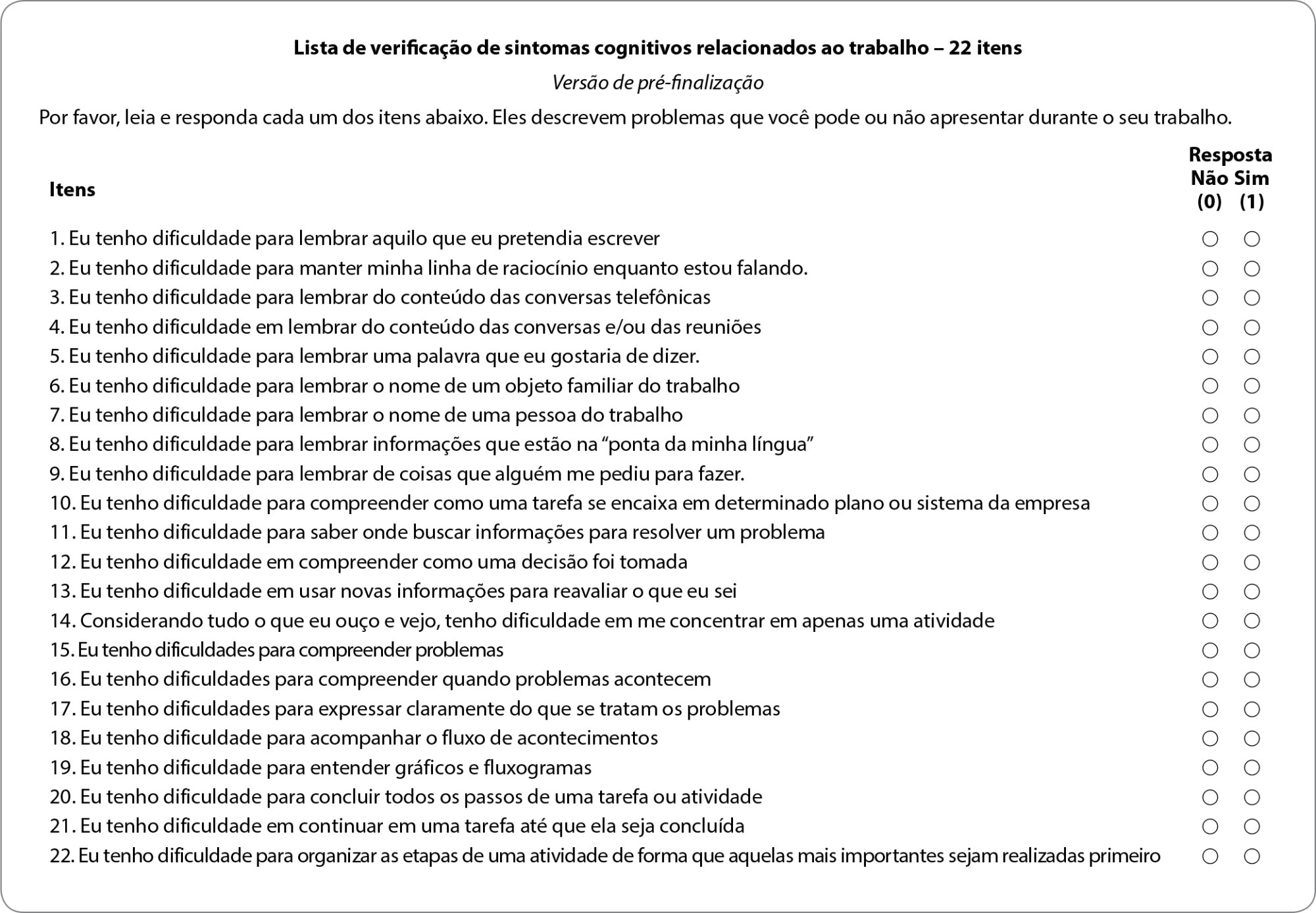
-
ORIGINAL ARTICLE
Impact of an educational intervention on standard precautions during the COVID-19 pandemic
Revista Brasileira de Enfermagem. 2023;76(4):e20220750
09-04-2023
Abstract
ORIGINAL ARTICLEImpact of an educational intervention on standard precautions during the COVID-19 pandemic
Revista Brasileira de Enfermagem. 2023;76(4):e20220750
09-04-2023DOI 10.1590/0034-7167-2022-0750
Views0See moreABSTRACT
Objective:
To evaluate the impact of an educational intervention on the knowledge of nursing professionals regarding standard precautions.
Methods:
This is an almost experimental study conducted with 100 nursing professionals. Data collection was performed using a sociodemographic characterization instrument and the Standard Precautions Knowledge Questionnaire. The educational intervention was based on five moments, where the approach to questions with less than 70% accuracy was intensified.
Results:
There was a significant difference between the scores of healthcare professionals before (16.20 ± 1.51) and after (16.90 ± 1.31) the educational intervention (W=3.336; p < 0.05). Regarding knowledge about hand hygiene after glove use, an increase in knowledge from 83% to 93% was obtained.
Conclusions:
A positive effect on the professionals’ knowledge was recorded, demonstrating advances regarding the strengthening of already acquired knowledge and the understanding of new knowledge.
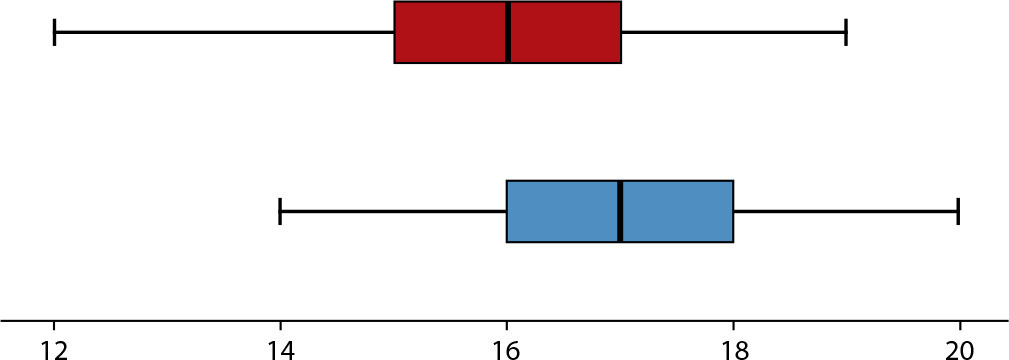
-
EDITORIAL
La cronicidad en el siglo XXI: frente a los desafíos de una sociedad cambiante
Revista Brasileira de Enfermagem. 2023;76(4):e760401
09-04-2023
Abstract
EDITORIALLa cronicidad en el siglo XXI: frente a los desafíos de una sociedad cambiante
Revista Brasileira de Enfermagem. 2023;76(4):e760401
09-04-2023DOI 10.1590/0034-7167.2023760401es
Views0Actualmente, existe un aumento de las enfermedades no transmisibles (ENT), el envejecimiento de la población y los cambios en el estilo de vida, lo que corrobora el aumento de la cronicidad, uno de los mayores desafíos que enfrenta la sociedad contemporánea. En este editorial examinaremos la cronicidad en el siglo XXI y la necesidad de […]See more -
EDITORIAL
Chronicity in the 21st century: facing the challenges of a changing society
Revista Brasileira de Enfermagem. 2023;76(4):e760401
09-04-2023
Abstract
EDITORIALChronicity in the 21st century: facing the challenges of a changing society
Revista Brasileira de Enfermagem. 2023;76(4):e760401
09-04-2023DOI 10.1590/0034-7167.2023760401
Views0Currently, there is an increase in non-communicable diseases (NCDs), population aging and changes in lifestyle, which corroborates the increase in chronicity, one of the greatest challenges faced by contemporary society. In this editorial, we will examine chronicity in the 21st century and the need to address this problem in a comprehensive and sustainable way.In recent […]See more -
ORIGINAL ARTICLE
Percepciones, maltrato y religión como predictores del impacto psicoemocional en enfermeros durante la pandemia COVID-19
Revista Brasileira de Enfermagem. 2023;76(3):e20220768
08-21-2023
Abstract
ORIGINAL ARTICLEPercepciones, maltrato y religión como predictores del impacto psicoemocional en enfermeros durante la pandemia COVID-19
Revista Brasileira de Enfermagem. 2023;76(3):e20220768
08-21-2023DOI 10.1590/0034-7167-2022-0768es
Views0See moreRESUMEN
Objetivos:
analizar la relación entre percepciones, maltrato y religión con el impacto psicoemocional en enfermeros durante la pandemia por covid-19.
Métodos:
estudio transversal descriptivo-analítico. Fue realizado entre los años 2020 y 2021; se encuestó a 319 enfermeros asistenciales de Perú mediante DASS-21; se evaluaron asociaciones mediante Rho de Spearman y regresión múltiple.
Resultados:
el 18,5 % presentó algún grado de estrés; el 50,2 %, ansiedad y el 29,1 %, depresión. La experiencia de maltrato, la autopercepción de la salud mental y la religión fueron predictores de estrés, ansiedad y depresión. El tiempo de experiencia laboral predice el estrés y ansiedad. Además, la autopercepción de la información y el género fueron predictores de la depresión.
Conclusiones:
los enfermeros peruanos presentaron altos niveles de estrés, ansiedad y depresión; y este impacto psicoemocional estuvo asociado a las percepciones, experiencias de maltrato y la religión.
-
ORIGINAL ARTICLE
Effectiveness of educational intervention among seropositive women about knowledge about HIV sexual transmission
Revista Brasileira de Enfermagem. 2023;76(3):e20220371
08-21-2023
Abstract
ORIGINAL ARTICLEEffectiveness of educational intervention among seropositive women about knowledge about HIV sexual transmission
Revista Brasileira de Enfermagem. 2023;76(3):e20220371
08-21-2023DOI 10.1590/0034-7167-2022-0371
Views0See moreABSTRACT
Objectives:
to assess the effectiveness of a group and telephone educational intervention with seropositive women about knowledge about HIV sexual transmission prevention.
Methods:
a quasi-experimental before-and-after study, carried out with 151 women living with HIV in a Specialized Care Service in a Brazilian capital. The educational intervention was carried out in three moments, with the assessment being carried out before the first and after the last moment.
Results:
97.4% of study participants were cisgender women aged between 18 and 58 years; 55.6% considered themselves brown; and 32.5% of interviewees had elementary school. Regarding knowledge about HIV sexual transmission, in 78.5% of items, there was an association (p<0.005) with increased participants’ knowledge after receiving the intervention.
Conclusions:
the educational intervention helped to increase the knowledge of women living with HIV about the sexual transmission of the infection.

-
ORIGINAL ARTICLE
Perceptions, maltreatment and religion as predictors of the psycho-emotional impact on nurses during the COVID-19 pandemic
Revista Brasileira de Enfermagem. 2023;76(3):e20220768
08-21-2023
Abstract
ORIGINAL ARTICLEPerceptions, maltreatment and religion as predictors of the psycho-emotional impact on nurses during the COVID-19 pandemic
Revista Brasileira de Enfermagem. 2023;76(3):e20220768
08-21-2023DOI 10.1590/0034-7167-2022-0768
Views0See moreABSTRACT
Objectives:
to analyze the relationship between perceptions, abuse and religion with the psycho-emotional impact on nurses during the COVID-19 pandemic.
Methods:
descriptive-analytical cross-sectional study. It took place between 2020 and 2021 and a total of 319 clinical nurses in Peru were interviewed using the DASS-21. Associations were assessed using Spearman’s Rho and multiple regression.
Results:
18.5% had some degree of stress; 50.2%, anxiety and 29.1%, depression. Experience of abuse, self-perception of mental health and religion were predictors of stress, anxiety and depression. The length of work experience predicts stress and anxiety. In addition, self-perception of information and gender were predictors of depression.
Conclusions:
peruvian nurses have high levels of stress, anxiety and depression, and this psycho-emotional impact was associated with perceptions, experiences of abuse and religion.
-
EXPERIENCE REPORT
Implementation of an Artificial Intelligence Algorithm for sepsis detection
Revista Brasileira de Enfermagem. 2020;73(3):e20180421
04-09-2020
Abstract
EXPERIENCE REPORTImplementation of an Artificial Intelligence Algorithm for sepsis detection
Revista Brasileira de Enfermagem. 2020;73(3):e20180421
04-09-2020DOI 10.1590/0034-7167-2018-0421
Views0See moreABSTRACT
Objectives:
to present the nurses’ experience with technological tools to support the early identification of sepsis.
Methods:
experience report before and after the implementation of artificial intelligence algorithms in the clinical practice of a philanthropic hospital, in the first half of 2018.
Results:
describe the motivation for the creation and use of the algorithm; the role of the nurse in the development and implementation of this technology and its effects on the nursing work process.
Final Considerations:
technological innovations need to contribute to the improvement of professional practices in health. Thus, nurses must recognize their role in all stages of this process, in order to guarantee safe, effective and patient-centered care. In the case presented, the participation of the nurses in the technology incorporation process enables a rapid decision-making in the early identification of sepsis.
-
ORIGINAL ARTICLE
Caring for the carer: quality of life and burden of female caregivers
Revista Brasileira de Enfermagem. 2019;72(3):728-736
06-27-2019
Abstract
ORIGINAL ARTICLECaring for the carer: quality of life and burden of female caregivers
Revista Brasileira de Enfermagem. 2019;72(3):728-736
06-27-2019DOI 10.1590/0034-7167-2018-0334
Views0See moreABSTRACT
Objective:
To assess the quality of life and the burden of female caregivers.
Method:
Descriptive, cross-sectional, quantitative study carried out with 224 informal caregivers from March to July 2016. Three instruments were used: a characterization form for the caregiver, the WHOQOL-Bref questionnaire and the Zarit Burden Interview. The following tests were used: Cronbach’s Alpha, Kolmogorov-Smirnov, Kruskal-Wallis, Spearman and Mann-Whitney.
Results:
The mean age of caregivers was 51.8 years with a standard deviation of 13.7. They were predominantly married, had a low income and low level of education, were first-degree relatives, had been providing care for one to five years and presented some pathology. The associations of quality of life that presented statistical significance were: income, marital status, number of people living with the caregiver and time of care.
Conclusion:
The burden was negatively correlated with QOL, that is, the greater the burden, the more impaired will be the life of these caregivers.
-
REVIEW
Development of clinical competence in nursing in simulation: the perspective of Bloom’s taxonomy
Revista Brasileira de Enfermagem. 2021;74(1):e20200135
03-24-2021
Abstract
REVIEWDevelopment of clinical competence in nursing in simulation: the perspective of Bloom’s taxonomy
Revista Brasileira de Enfermagem. 2021;74(1):e20200135
03-24-2021DOI 10.1590/0034-7167-2020-0135
Views0See moreABSTRACT
Objectives:
to investigate the scientific evidence on the use of Bloom’s taxonomy for developing competence in nursing professionals and students in clinical simulation.
Methods:
integrative review of the National Library of Medicine (NLM), National Institutes of Health (NIH), Cumulative Index to Nursing and Allied Health Literature (CINAHL), Latin American and Caribbean Literature in Health Sciences (LILACS), Web of Science and SCOPUS databases, using the Rayyan application.
Results:
a total of 871 studies were identified; four composed the sample. The development of clinical competence occurred through the coordination of knowledge, skills, and attitudes. To develop the cognitive domain, the objectives of knowledge and comprehension of the Bloom’s taxonomy were mobilized. The psychomotor domain required development of the skills demanded by the proposed clinical care. The affective domain was developed through will and motivation to learn.
Conclusions:
it is possible to develop clinical competence in nursing by adopting Bloom’s taxonomy in each phase of clinical simulation.
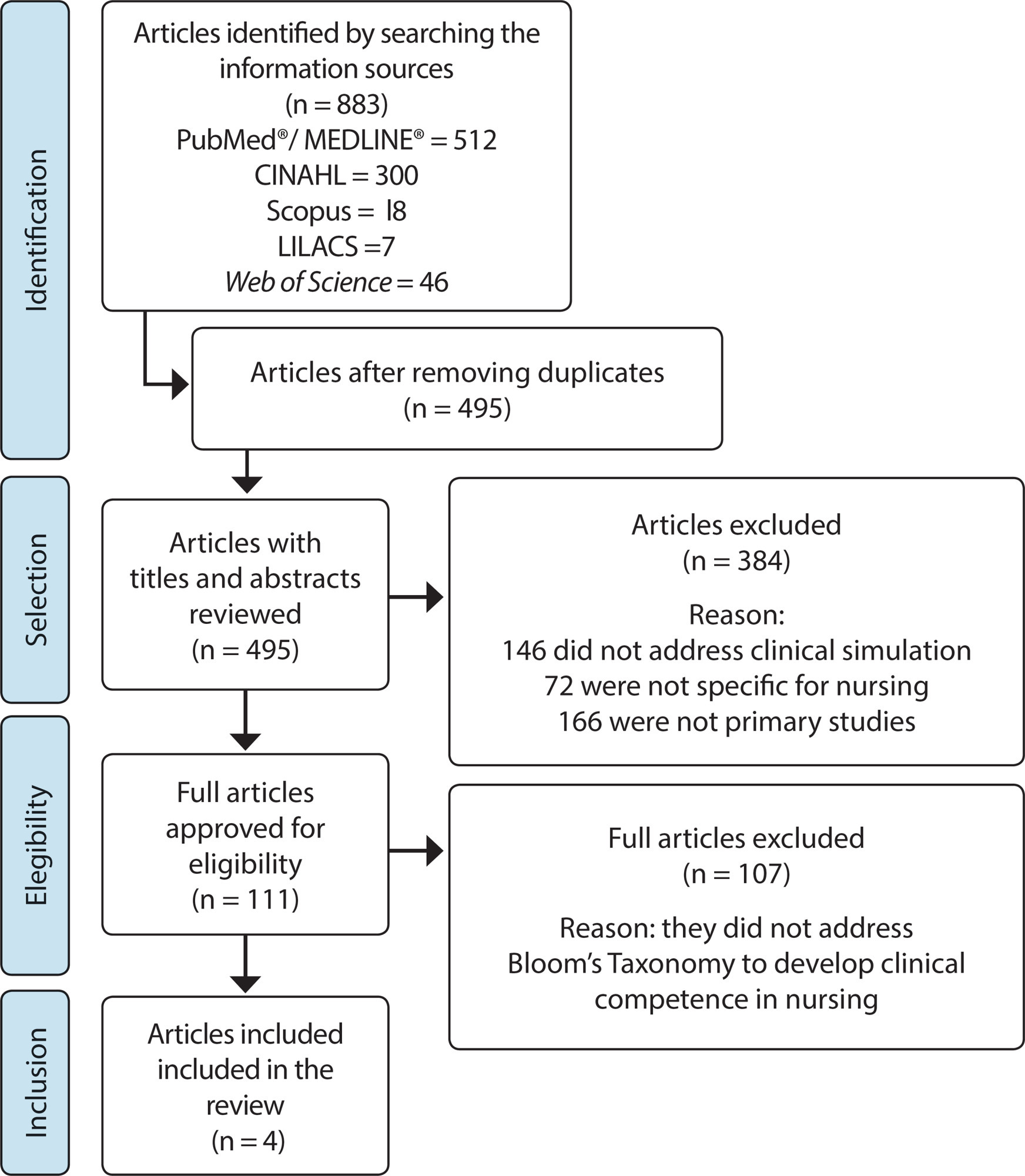
-
ORIGINAL ARTICLE
Package of menthol measures for thirst relief: a randomized clinical study
Revista Brasileira de Enfermagem. 2019;72(3):600-608
06-27-2019
Abstract
ORIGINAL ARTICLEPackage of menthol measures for thirst relief: a randomized clinical study
Revista Brasileira de Enfermagem. 2019;72(3):600-608
06-27-2019DOI 10.1590/0034-7167-2018-0057
Views0See moreABSTRACT
Objective:
To evaluate the effectiveness of the menthol package (lip hydration and ice popsicles) compared to a package of non-menthol measures (lip hydration and ice popsicles) as a way to relieve thirst in patients in the Anesthetic Recovery Room.
Method:
Randomized and parallel trial study, with 120 patients randomized patients in an experimental group – menthol measurements (n=59) and control group – measures without menthol (n = 61).
Results:
There was a significant (p<0.05) decrease in intensity, hydration, dryness and taste in the oral cavity between the three moments of assessment/intervention in the two groups. The difference was significant in the experimental group for thirst intensity at the second assessment/intervention point (p<0.05) after a single administration of the menthol package.
Conclusion:
There was a reduction in thirst intensity in both groups. Patients who received menthol packages showed a significant decrease in intensity after a single evaluation/intervention time. NCT: 02869139.
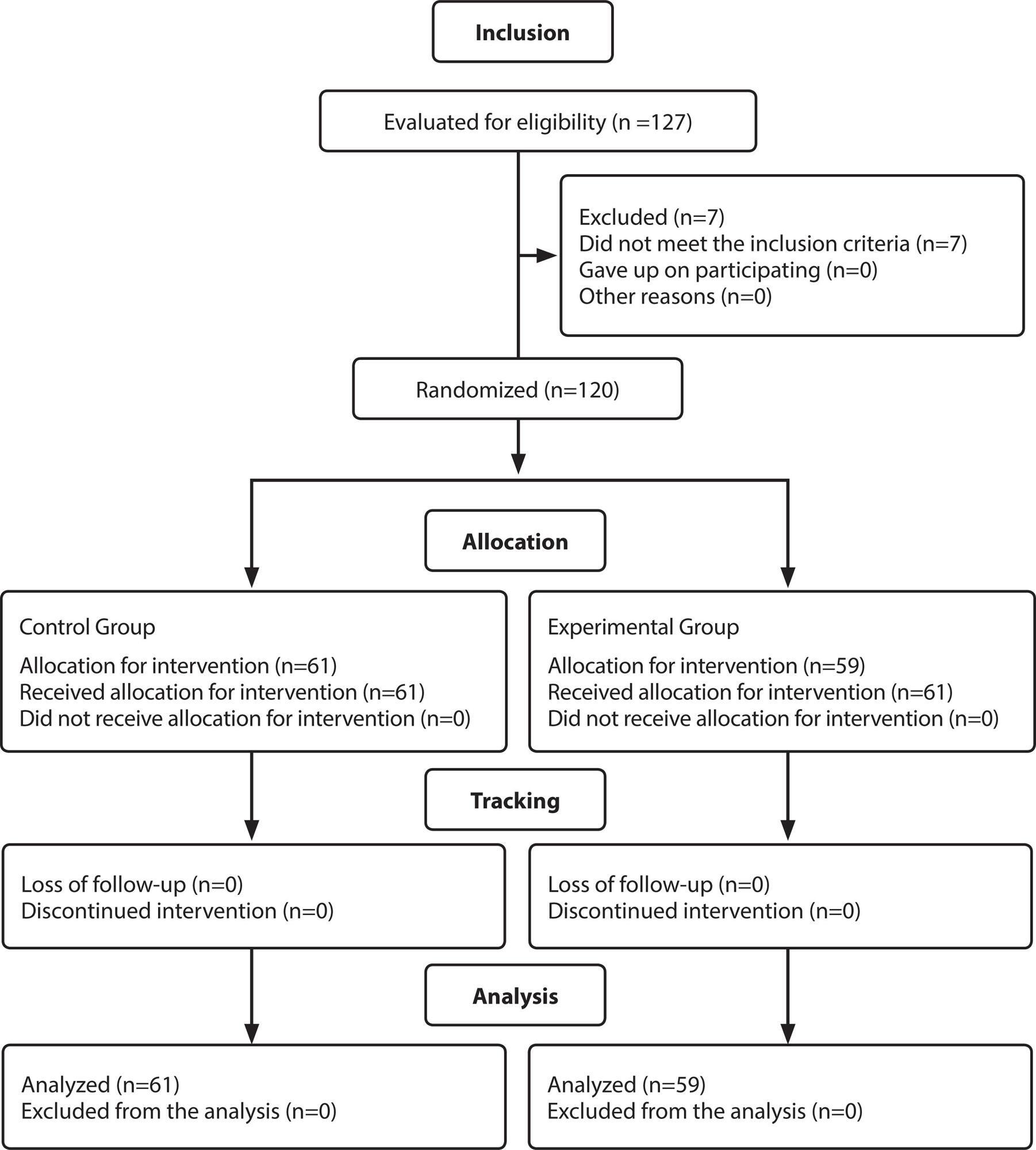
-
EDITORIAL
Coronavirus 2020
Revista Brasileira de Enfermagem. 2020;73(2):e2020n2
03-27-2020
Abstract
EDITORIALCoronavirus 2020
Revista Brasileira de Enfermagem. 2020;73(2):e2020n2
03-27-2020DOI 10.1590/0034-7167-2020730201
Views0Emerging and reemerging infectious diseases are constant challenges for public health worldwide. Recent cases of pneumonia of unknown cause in Wuhan, China, have led to the discovery of a new type of Coronavirus (2019-nCoV), which are enveloped RNA viruses, commonly found in humans, other mammals and birds, capable of causing respiratory, enteric, hepatic, and neurological […]See more -
ORIGINAL ARTICLE
Pressure injury related to the use of personal protective equipment in COVID-19 pandemic
Revista Brasileira de Enfermagem. 2020;73:e20200670
12-04-2020
Abstract
ORIGINAL ARTICLEPressure injury related to the use of personal protective equipment in COVID-19 pandemic
Revista Brasileira de Enfermagem. 2020;73:e20200670
12-04-2020DOI 10.1590/0034-7167-2020-0670
Views0See moreABSTRACT
Objective:
To describe the prevalence and factors associated with pressure injuries related to the use of personal protective equipment during the COVID-19 pandemic.
Methods:
Cross-sectional study conducted using an instrument made available in social networks with 1,106 health professionals. The data were analyzed using descriptive statistics and compared, considering pvalue < 0.05.
Results:
There was a prevalence of 69.4% for pressure injuries related to the use of personal protective equipment, with an average of 2.4 injuries per professional. The significant factors were: under 35 years of age, working and wearing personal protective equipment for more than six hours a day, in hospital units, and without the use of inputs for protection.
Conclusion:
Pressure injuries related to the use of medical devices showed a high prevalence in this population. The recognition of the damage in these professionals makes it possible to advance in prevention strategies.
-
ORIGINAL ARTICLE
Accessibility of children with special health needs to the health care network
Revista Brasileira de Enfermagem. 2019;72:65-71
12-13-2019
Abstract
ORIGINAL ARTICLEAccessibility of children with special health needs to the health care network
Revista Brasileira de Enfermagem. 2019;72:65-71
12-13-2019DOI 10.1590/0034-7167-2017-0899
Views0See moreABSTRACT
Objective:
To know how children with special health needs access the health care network.
Method:
This is a qualitative research of descriptive-exploratory type, developed using semi-structured interviews mediated by the Talking Map design. Participants were 19 family caregivers of these children in two Brazilian municipalities. Data were submitted to inductive thematic analysis.
Results:
Difficulties were mentioned from the diagnosis moment to the specialized follow-up, something represented by the itinerary of the c hild and his/her family in the search for the definition of the medical diagnosis and the access to a specialized professional; a gap between the children’s needs and the care offered was observed in primary health care.
Conclusion:
The access of children with special health needs is filled with obstacles such as slowness in the process of defining the child’s diagnosis and referral to a specialist. Primary health care services were replaced by care in emergency care units.
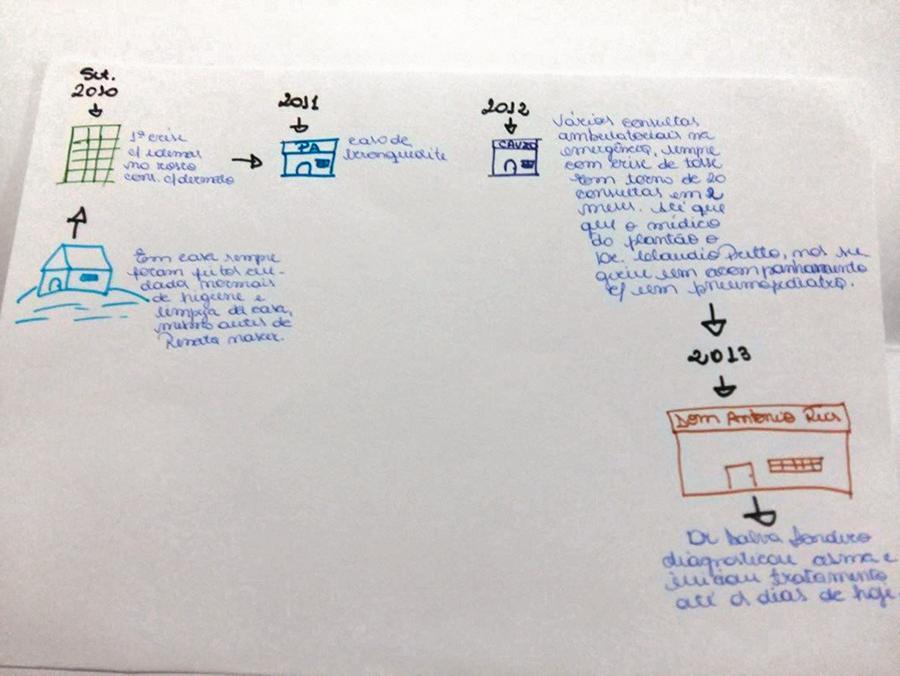
Search
Search in:
Nuvem de Tags
Aged (144) Atenção Primária à Saúde (239) COVID-19 (104) Cuidados de Enfermagem (269) Educação em Enfermagem (151) Educação em Saúde (139) Enfermagem (930) Estudos de Validação (131) Health Education (144) Idoso (208) Mental Health (149) Nursing (987) Nursing Care (306) Patient Safety (151) Primary Health Care (284) Qualidade de Vida (104) Quality of Life (106) Saúde Mental (145) Segurança do Paciente (150) Validation Studies (108)





